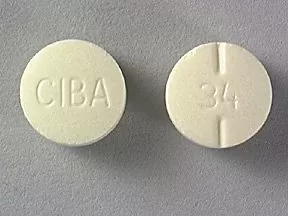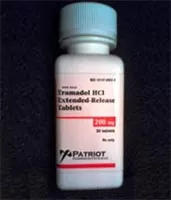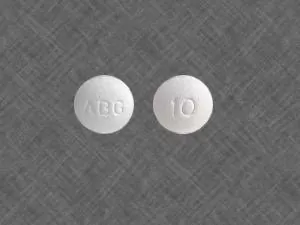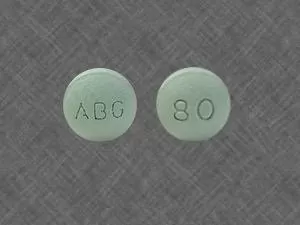In the realm of pain management, Percocet 10-325 mg is a medication that often comes into focus. It’s widely prescribed for the relief of moderate to severe pain, offering a combination of two key ingredients: oxycodone and acetaminophen. However, like any medication, understanding its uses, benefits, risks, and safe usage is essential for patients and healthcare providers. In this blog, we will delve into the world of Percocet 10-325 mg, exploring its composition, uses, potential side effects, and safety guidelines.
Percocet 10-325 mg: The Ingredients
Percocet 10-325 mg is a combination drug. It contains two primary ingredients:
- Oxycodone: This is a potent opioid analgesic, belonging to the class of medications known for their effectiveness in pain relief. Oxycodone acts on the central nervous system, binding to specific receptors and altering the perception of pain. It’s particularly valuable for severe pain that hasn’t responded well to milder analgesics.
- Acetaminophen: This is a non-opioid pain reliever and fever reducer. It enhances the effectiveness of oxycodone while providing additional pain relief through a different mechanism of action. Acetaminophen is also used to reduce fever.
Uses of Percocet 10-325 mg
Percocet 10-325 mg is prescribed for various medical conditions and situations, including:
- Post-Surgical Pain: It’s commonly used to manage pain after surgical procedures, helping patients recover more comfortably.
- Chronic Pain: Individuals dealing with chronic pain conditions, such as arthritis or back pain, may be prescribed Percocet to improve their quality of life.
- Injury-Related Pain: When accidents or injuries cause moderate to severe pain, Percocet can provide relief during the healing process.
- Cancer-Related Pain: It plays a crucial role in palliative care, offering comfort to cancer patients experiencing intense pain.
- Dental Procedures: Dentists may prescribe Percocet for pain management after oral surgeries or complex dental procedures.
Understanding Dosage: Percocet 10-325 mg
The numbers in the name Percocet 10-325 mg represent the amount of each active ingredient in the medication. In this case:
- “10” stands for 10 mg of oxycodone, which is the opioid component.
- “325” represents 325 mg of acetaminophen, the non-opioid component.
The specific dosage a patient receives is determined by their healthcare provider based on factors like the severity of their pain, medical history, and tolerance to opioids. It’s important to note that higher doses, such as Percocet 10-325 mg, are typically reserved for cases of more severe or chronic pain.
Managing Pain with Percocet 10-325 mg
Percocet 10-325 mg is an effective tool in pain management. It works by binding to opioid receptors in the brain and spinal cord, which alters the perception of pain. This dual-ingredient medication provides both opioid-driven pain relief and the additional benefit of reducing fever and inflammation, thanks to the acetaminophen component.
However, while Percocet can provide essential relief, it’s not a standalone solution. Pain management often involves a multi-faceted approach. For chronic pain, patients and healthcare providers may consider physical therapy, lifestyle modifications, and complementary therapies alongside medications.
Side Effects
Like all medications, Percocet 10-325 mg may cause side effects. Common side effects include:
- Nausea: Some individuals may experience nausea when taking Percocet. Taking it with food can help alleviate this side effect.
- Constipation: Opioid medications can lead to constipation. Patients are often advised to maintain good hydration and consider stool softeners if constipation becomes a problem.
- Drowsiness: Percocet can cause drowsiness and impair cognitive and motor functions. Patients are typically advised not to drive or operate heavy machinery while taking this medication.
- Respiratory Depression: In rare cases, opioids like oxycodone can lead to respiratory depression, which is a slowing of breathing. This is more likely to occur with high doses or when combined with other sedatives.
- Itching: Some individuals may experience itching as a side effect of Percocet. This side effect can vary in intensity.
It’s essential for patients to communicate openly with their healthcare providers about any side effects they experience. In some cases, side effects may subside as the body adjusts to the medication. In other cases, adjustments to the dosage or a switch to a different medication may be necessary.
Safety Guidelines
Using Percocet 10-325 mg safely is of utmost importance. Here are some safety guidelines to keep in mind:
- Prescription Only: Percocet is available by prescription only and should never be used without a healthcare provider’s guidance. It is not meant for self-medication or sharing with others.
- Dosage Determination: The appropriate dosage of Percocet should be determined by a healthcare provider based on the patient’s pain severity and individual factors.
- Tolerance and Dependence: Prolonged use of Percocet can lead to tolerance, where higher doses are needed for the same pain relief. Dependence can also develop, leading to withdrawal symptoms upon discontinuation. Regular communication with a healthcare provider is essential.
- Storage: Store Percocet in a secure location to prevent unauthorized access, especially by children or individuals who should not have the medication.
- Alcohol: Drinking alcohol while taking Percocet is not recommended, as it can intensify the sedative and respiratory depressant effects, increasing the risk of side effects and overdose.
- Driving and Machinery: Patients taking Percocet should avoid activities requiring mental alertness, such as driving or operating heavy machinery.
- Disposal: Unused or expired Percocet tablets should be properly disposed of to prevent unauthorized access. Many communities have drug take-back programs for safe disposal.
How does Percocet Work?
Percocet is a powerful pain medication that combines two active ingredients: oxycodone, an opioid analgesic, and acetaminophen, a non-opioid pain reliever. To understand how Percocet works, it’s essential to delve into the mechanisms of these two components and their synergy in providing effective pain relief.
Oxycodone, the opioid component of Percocet, functions by binding to specific receptors in the brain and spinal cord known as opioid receptors. These receptors are part of the body’s natural pain management system, and when activated by oxycodone, they work to decrease the perception of pain. Oxycodone not only reduces the sensation of pain but also alters how the brain processes and responds to painful stimuli. This dual action results in significant pain relief, making it particularly useful for managing moderate to severe pain.
Acetaminophen, the non-opioid component, has a different mode of action. It primarily acts as a fever reducer and pain reliever by inhibiting the production of chemicals called prostaglandins, which are involved in pain and fever. By reducing prostaglandin levels in the brain, acetaminophen helps to alleviate discomfort and lower elevated body temperatures.
The combination of oxycodone and acetaminophen in Percocet serves a dual purpose. Firstly, oxycodone provides potent pain relief by interacting with opioid receptors. Secondly, acetaminophen complements the analgesic effects of oxycodone, allowing for a lower dose of the opioid component while achieving effective pain management. This combination minimizes the risk of opioid-related side effects and dependence, as it relies on two different mechanisms of action.
The synergy between oxycodone and acetaminophen is vital in Percocet’s effectiveness. While oxycodone addresses the perception of pain at the neurological level, acetaminophen complements this action by reducing pain and fever at the site of injury or inflammation. This dual approach results in comprehensive pain control, making Percocet a valuable tool for individuals dealing with moderate to severe pain, such as post-operative patients or those with chronic pain conditions.
Who should avoid taking Percocet tablet?
Percocet is a prescription medication that contains a combination of two active ingredients: oxycodone, an opioid pain reliever, and acetaminophen, a non-opioid pain reliever and fever reducer. While Percocet can be effective in managing moderate to severe pain, it is not suitable for everyone, and there are specific groups of individuals who should avoid taking this medication.
- Allergies: Individuals with a known allergy to oxycodone, acetaminophen, or any other ingredients in Percocet should avoid taking it, as allergic reactions can be severe and life-threatening.
- Respiratory Conditions: People with respiratory conditions like asthma, chronic obstructive pulmonary disease (COPD), or other breathing problems should exercise caution when using Percocet, as opioids can suppress respiratory function.
- Liver Issues: Those with liver disease or a history of liver problems should avoid Percocet due to the presence of acetaminophen, which can be harmful to the liver when taken in excessive doses.
- Drug Interactions: Individuals taking certain medications, especially monoamine oxidase inhibitors (MAOIs) or other central nervous system depressants, should not use Percocet, as it can lead to dangerous drug interactions.
- Pregnancy and Breastfeeding: Pregnant or breastfeeding women should consult their healthcare provider before taking Percocet, as opioids can have adverse effects on the developing fetus or nursing infant.
It is crucial to follow a healthcare provider’s guidance when considering Percocet, as they can assess an individual’s specific medical history and determine if the benefits of the medication outweigh the potential risks.
Factors affecting intake of Percocet tablet
The intake of Percocet tablets, like any medication, can be influenced by various factors, including:
- Prescription and Medical Advice: The primary factor in Percocet intake is a medical prescription. A healthcare provider determines the appropriate dosage and duration based on the patient’s medical condition, pain severity, and overall health.
- Patient’s Pain Level: The severity of the pain is a critical factor. Patients are often advised to take Percocet when they experience moderate to severe pain. Lower doses may be recommended for milder pain.
- Tolerance and Dependence: Over time, some patients may develop tolerance to the effects of Percocet, requiring higher doses for the same pain relief. Healthcare providers monitor for signs of tolerance and dependence.
- Age and Weight: Dosage may vary depending on a patient’s age, weight, and metabolism. Healthcare providers consider these factors when prescribing Percocet.
- Underlying Medical Conditions: Patients with certain medical conditions, such as liver or kidney problems, may require adjusted dosages or should avoid Percocet altogether due to the risk of complications.
- Drug Interactions: Percocet can interact with other medications, potentially causing adverse effects or reducing its efficacy. Patients should inform their healthcare providers of all medications they are taking.
- Duration of Use: The recommended duration of Percocet use is typically short-term for acute pain. Prolonged use can lead to tolerance, dependence, and a higher risk of side effects.
- Pregnancy and Breastfeeding: Special considerations apply to pregnant and breastfeeding women, as opioids like oxycodone can affect the developing fetus or nursing infant. A healthcare provider should carefully assess the risks and benefits.
- Psychological and Emotional Factors: Patients’ psychological and emotional states can influence their use of Percocet. Some individuals may misuse or abuse the medication due to factors like stress, anxiety, or addiction.
- Education and Awareness: Patients should be educated about the proper use of Percocet, potential side effects, and the risks associated with misuse or overdose.
Strength of Percocet tablet
Percocet is a brand name for a combination medication that contains two active ingredients: oxycodone and acetaminophen. The strength of a Percocet tablet is typically indicated by the dosage of oxycodone it contains, which is measured in milligrams (mg). Percocet is available in various strengths, with the most common ones being 5/325 mg, 7.5/325 mg, and 10/325 mg.
The first number in the strength (e.g., 5, 7.5, or 10) represents the amount of oxycodone, which is an opioid analgesic. The second number (325) represents the amount of acetaminophen, a non-opioid pain reliever and fever reducer. The combination of these two drugs provides more effective pain relief than either drug alone.
The choice of Percocet strength is determined by a healthcare provider based on the patient’s pain severity, medical condition, and tolerance to opioids. It is essential for patients to take Percocet only as prescribed and avoid altering the dosage without medical guidance to prevent potential side effects and risks associated with opioid medications.
Positive points to Percocet tablet
Percocet, a prescription medication that combines oxycodone, an opioid analgesic, and acetaminophen, a non-opioid pain reliever, has several positive aspects when used appropriately and under medical supervision:
- Effective Pain Relief: Percocet is highly effective at relieving moderate to severe pain. It can provide significant pain relief, making it a valuable tool in managing acute pain after surgery, injury, or other medical procedures.
- Percocet is versatile and can be used to manage a wide range of painful conditions, including post-operative pain, dental procedures, and chronic pain conditions like cancer-related pain.
- It works relatively quickly, providing relief within 15 to 30 minutes after ingestion, which can be especially helpful for individuals in acute pain.
- The combination of oxycodone and acetaminophen allows for lower doses of oxycodone, reducing the risk of opioid-related side effects and dependence while still achieving effective pain relief.
- It is typically prescribed for short-term use, reducing the risk of long-term opioid dependence and misuse when used as directed.
- Healthcare providers can tailor the dosage to each patient’s specific needs, taking into account the severity of pain, medical history, and tolerance.
- For those suffering from chronic or debilitating pain, Percocet can help improve their quality of life by making daily activities more manageable and comfortable.
- By offering a combination of pain-relief mechanisms (opioid and non-opioid), Percocet can help improve patient compliance with prescribed pain management regimens.
- It is suitable for use in both inpatient and outpatient settings, making it adaptable to various healthcare settings and conditions.
- Percocet is widely available in different strengths, which allows healthcare providers to choose the appropriate formulation for each patient’s needs.
It’s important to note that while Percocet has these positive aspects, it also carries potential risks, including the risk of tolerance, dependence, and side effects, particularly if not used as prescribed. Patients should follow their healthcare provider’s instructions and report any adverse effects promptly.
Correct way to store Percocet tablet
Storing Percocet tablets properly is essential to maintain their effectiveness, ensure safety, and prevent misuse. Here’s the correct way to store Percocet tablets:
- Original Container: Keep Percocet in its original prescription container. The container should have a label with information about the medication, including the prescribing physician, dosage instructions, and expiration date.
- Cool and Dry Location: Store Percocet in a cool, dry place, away from direct sunlight and moisture. The ideal temperature range is usually between 68°F to 77°F (20°C to 25°C).
- Secure and Out of Reach: Keep the container securely closed and out of reach of children and pets. Opioid medications like Percocet can be dangerous if ingested accidentally.
- Child-Resistant Packaging: Ensure that the container is child-resistant to provide an additional layer of safety against accidental ingestion.
- Avoid Bathroom Storage: Do not store Percocet in the bathroom, as the humidity and temperature fluctuations can degrade the medication.
- Medication Lock Box: Consider using a medication lock box if there’s a concern about unauthorized access or misuse, especially if you have children or teenagers in the household.
- Inaccessible to Visitors: If you have guests or visitors, ensure that your medications, including Percocet, are not accessible to them. It’s important to keep your medications private.
- Record Keeping: Keep a record of your medication use, including the date of dispensing and the quantity taken. This can help prevent misuse and ensure you’re following the prescribed dosage.
- Secure Medications While Traveling: When traveling, carry only the amount of medication needed for the duration of your trip, and store it in a secure and portable container. Keep a copy of your prescription handy.
Disposal of Expired or Unused Medication: Safely dispose of any expired or unused Percocet tablets. Most communities have medication disposal programs or take-back events to ensure safe disposal.
Frequently Asked Questions of Percocet
- What is Percocet?
Percocet is a brand name for a prescription medication that combines two active ingredients: oxycodone, an opioid pain reliever, and acetaminophen, a non-opioid pain reliever.
- What is Percocet used for?
Percocet is used to manage moderate to severe pain. It is often prescribed for post-surgical pain, injury-related pain, and other painful conditions.
- How does Percocet work?
Oxycodone in Percocet binds to opioid receptors in the brain and spinal cord, reducing the perception of pain. Acetaminophen enhances the pain-relieving effects of oxycodone and can reduce fever.
- Is Percocet a controlled substance?
Yes, Percocet is classified as a Schedule II controlled substance due to its oxycodone content. This classification is due to its potential for abuse and dependence.
- How is Percocet taken?
Percocet is typically taken orally in tablet form. The dosage and frequency are determined by a healthcare provider and should be followed precisely.
- What are the common side effects of Percocet?
Common side effects may include drowsiness, dizziness, constipation, nausea, and vomiting. More serious side effects can occur and should be reported to a healthcare provider.
- What precautions should be taken when using Percocet?
Patients should not drink alcohol while taking Percocet, as it can increase the risk of side effects. It should only be used as prescribed and not shared with others.
- Can Percocet be used during pregnancy and breastfeeding?
The use of Percocet during pregnancy and breastfeeding should be discussed with a healthcare provider. It can have risks to both the mother and the baby.
- Is it safe to drive or operate heavy machinery while taking Percocet?
Percocet can cause drowsiness and impaired coordination, so it’s important to avoid driving or operating machinery until you know how it affects you.
- What should I do if I miss a dose of Percocet?
If you miss a dose, take it as soon as you remember. However, if it’s close to the time for the next dose, skip the missed dose and continue with your regular schedule.













